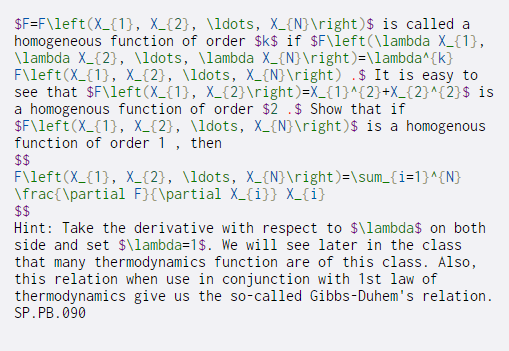Answered step by step
Verified Expert Solution
Question
1 Approved Answer
$F=Fleft(X_{1}, X_{2}, ldots, X_{N} ight)$ is called a homogeneous function of order $k$ if $Fleft(lambda X_{1}, lambda X_{2}, ldots, lambda X_{N} ight)=lambda^{k} Fleft(x_{1}, X_{2}, ldots,

Step by Step Solution
There are 3 Steps involved in it
Step: 1

Get Instant Access to Expert-Tailored Solutions
See step-by-step solutions with expert insights and AI powered tools for academic success
Step: 2

Step: 3

Ace Your Homework with AI
Get the answers you need in no time with our AI-driven, step-by-step assistance
Get Started


